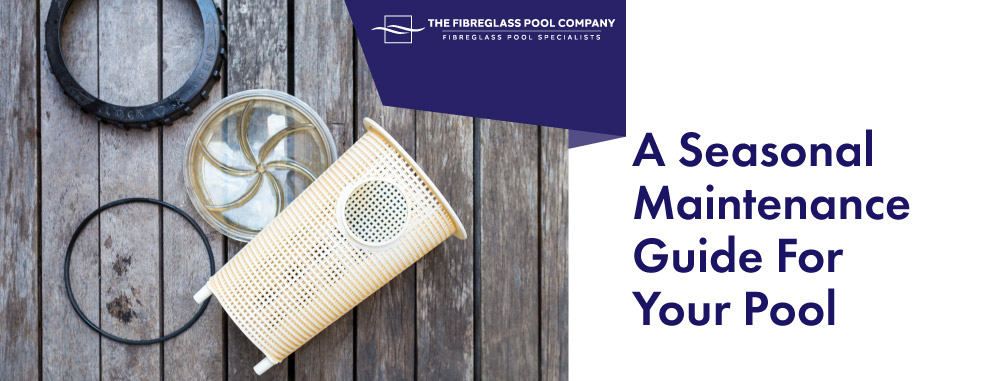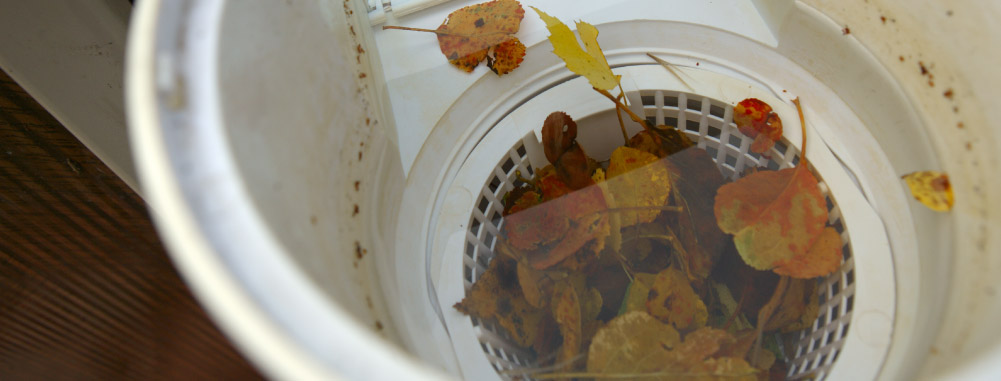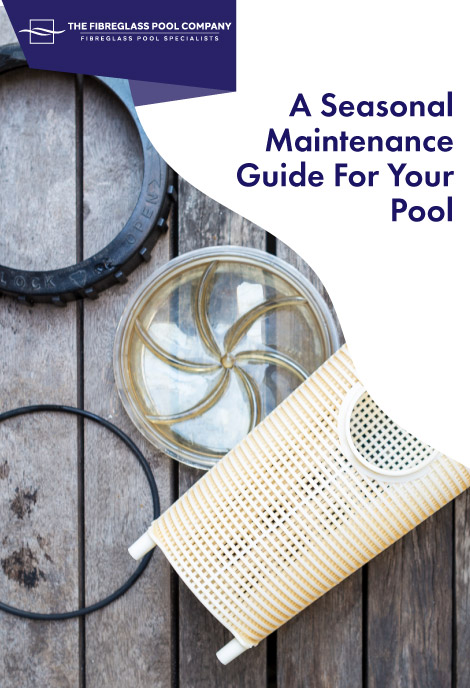Owning a swimming pool is a true luxury that provides endless hours of relaxation and fun. However, with great luxury comes great responsibility. It is of utmost importance to prioritise proper maintenance to ensure that your pool remains in pristine condition, allowing for safe and enjoyable swimming experiences all year round. From diligently monitoring water chemistry to regularly cleaning the pool filters and skimming debris, every step is crucial in maintaining the optimal functioning of your pool. In this informative article, we will guide you through the essential seasonal maintenance tasks, offering detailed insights and expert tips to help you keep your swimming pool in top-notch condition.

Here's what you can do:
Spring Pool Maintenance
Spring is the perfect time to begin preparing your pool for the upcoming warmer months. Start by carefully removing the pool cover and meticulously clearing away any debris that may have accumulated during the winter season.
Next, refill the pool to its appropriate water level and ensure that all pool systems are properly activated. Take a thorough look for any potential leaks or damages that might have occurred during the colder months. It is crucial to maintain the pool’s pH levels between 7.2 and 7.6, while keeping the chlorine levels within the recommended range of 1.0 and 3.0 ppm. If necessary, consider administering a shock treatment to effectively eliminate any bacteria or algae present.
To further guarantee optimal swimming conditions, it is advisable to initiate the pool’s filtration system and allow it to run for several days. This will enable the water to circulate efficiently and facilitate the even distribution of chemicals. Remember to regularly inspect the filtration system, and clean or replace the filters as needed. By diligently following these steps, you can rest assured that your pool will be fully prepared and primed for the upcoming swimming season.

Summer Pool Maintenance
Summer is the season when your pool sees the most use, so maintaining your pool during this period is crucial. Regular skimming of the water surface will help to remove leaves, bugs, and other debris that can affect water clarity and chemical balance. At least once a week, vacuum the pool to keep the water clean and reduce the amount of chemicals you need.
Checking your pool’s pH and chlorine levels should become a part of your daily routine. The pH should remain between 7.2 and 7.6, and chlorine levels should stay within the 1.0 and 3.0 ppm range. You may need to adjust the chemicals more regularly due to increased usage and fluctuating temperatures.
The summer heat can cause the pool water to evaporate faster, so monitoring the water level is necessary. Refill as needed, but remember to adjust the pool chemicals thereafter to maintain proper balance.
The filter will be working harder due to increased usage, so clean it regularly to ensure its optimal performance. If your pool sees heavy usage, consider shocking it once a week to kill bacteria and other organic material.
By following these steps, you can ensure that your pool remains a clean and enjoyable place to cool off during the hot summer months.
Autumn Pool Maintenance
As autumn arrives, swimming pool usage declines. However, it’s still crucial to maintain your pool for the upcoming colder months. Falling leaves can clog filters and skimmers, so regular skimming and vacuuming is necessary to prevent debris build-up.
Cooler temperatures in autumn can affect water temperature, so monitor chemical levels closely. Maintain pH between 7.2 and 7.6 and chlorine levels between 1.0 and 3.0 ppm.
Inspect and clean the filtration system periodically, even though it doesn’t work as hard as in summer. Lower the water level and drain equipment before freezing temperatures to prevent damage.
Consider getting a pool cover to keep debris out and prevent water loss through evaporation. Proper maintenance now saves time and effort when reopening in spring.
Prepare your pool for colder months: skim regularly, reduce water level, drain equipment. Balance the water and cover your pool to protect it during winter. Easy reopening in spring!

Winter Pool Maintenance
Winter is the off-season for your swimming pool, but it doesn’t mean your maintenance duties are entirely on hold. During the winter months, it’s crucial to keep an eye on your pool, even though it’s covered and not in use. Regularly check the pool cover for damage or wear and tear. Any damage can allow debris, snow, or rain to enter the pool, which could disrupt the water balance and cause problems when the swimming season returns.
One of the main concerns during winter is freezing temperatures. Be sure to keep the pool’s water level monitored, as frozen pipes can cause significant damage. A pool antifreeze can be used as an additional protective measure for the pipes.
While the water isn’t being actively used, it’s still essential to maintain its chemical balance. Test the water every month and adjust your chemical levels as needed. The pool’s pH level should be kept between 7.2 to 7.6, and chlorine levels should be maintained within the 1.0 and 3.0 ppm range.
Even though your pool is not in use, keeping the pump and filter system running at reduced hours will prevent water from freezing in your pipes and equipment. It also helps circulate the pool chemicals, keeping the water balanced and ready for the next season.
In conclusion, swimming pool maintenance is a year-round commitment that requires regular attention and care. Each season presents unique challenges, from managing increased usage and evaporation in the summer months, to responding to falling leaves and cooling temperatures in autumn, or protecting your pool from freezing conditions in the winter. Regular cleaning, testing of water quality, and appropriate use of chemicals are critical to maintaining a clean, healthy, and enjoyable swimming environment. By following these guidelines, you can ensure your pool remains in top condition all year round, ready to provide endless fun and relaxation when the swimming season arrives.
Owning a swimming pool is a true luxury that provides endless hours of relaxation and fun. However, with great luxury comes great responsibility. It is of utmost importance to prioritise proper maintenance to ensure that your pool remains in pristine condition, allowing for safe and enjoyable swimming experiences all year round. From diligently monitoring water chemistry to regularly cleaning the pool filters and skimming debris, every step is crucial in maintaining the optimal functioning of your pool. In this informative article, we will guide you through the essential seasonal maintenance tasks, offering detailed insights and expert tips to help you keep your swimming pool in top-notch condition.

Here's what you can do:
Spring Pool Maintenance
Spring is the perfect time to begin preparing your pool for the upcoming warmer months. Start by carefully removing the pool cover and meticulously clearing away any debris that may have accumulated during the winter season.
Next, refill the pool to its appropriate water level and ensure that all pool systems are properly activated. Take a thorough look for any potential leaks or damages that might have occurred during the colder months. It is crucial to maintain the pool’s pH levels between 7.2 and 7.6, while keeping the chlorine levels within the recommended range of 1.0 and 3.0 ppm. If necessary, consider administering a shock treatment to effectively eliminate any bacteria or algae present.
To further guarantee optimal swimming conditions, it is advisable to initiate the pool’s filtration system and allow it to run for several days. This will enable the water to circulate efficiently and facilitate the even distribution of chemicals. Remember to regularly inspect the filtration system, and clean or replace the filters as needed. By diligently following these steps, you can rest assured that your pool will be fully prepared and primed for the upcoming swimming season.

Summer Pool Maintenance
Summer is the season when your pool sees the most use, so maintaining your pool during this period is crucial. Regular skimming of the water surface will help to remove leaves, bugs, and other debris that can affect water clarity and chemical balance. At least once a week, vacuum the pool to keep the water clean and reduce the amount of chemicals you need.
Checking your pool’s pH and chlorine levels should become a part of your daily routine. The pH should remain between 7.2 and 7.6, and chlorine levels should stay within the 1.0 and 3.0 ppm range. You may need to adjust the chemicals more regularly due to increased usage and fluctuating temperatures.
The summer heat can cause the pool water to evaporate faster, so monitoring the water level is necessary. Refill as needed, but remember to adjust the pool chemicals thereafter to maintain proper balance.
The filter will be working harder due to increased usage, so clean it regularly to ensure its optimal performance. If your pool sees heavy usage, consider shocking it once a week to kill bacteria and other organic material.
By following these steps, you can ensure that your pool remains a clean and enjoyable place to cool off during the hot summer months.
Autumn Pool Maintenance
As autumn arrives, swimming pool usage declines. However, it’s still crucial to maintain your pool for the upcoming colder months. Falling leaves can clog filters and skimmers, so regular skimming and vacuuming is necessary to prevent debris build-up.
Cooler temperatures in autumn can affect water temperature, so monitor chemical levels closely. Maintain pH between 7.2 and 7.6 and chlorine levels between 1.0 and 3.0 ppm.
Inspect and clean the filtration system periodically, even though it doesn’t work as hard as in summer. Lower the water level and drain equipment before freezing temperatures to prevent damage.
Consider getting a pool cover to keep debris out and prevent water loss through evaporation. Proper maintenance now saves time and effort when reopening in spring.
Prepare your pool for colder months: skim regularly, reduce water level, drain equipment. Balance the water and cover your pool to protect it during winter. Easy reopening in spring!

Winter Pool Maintenance
Winter is the off-season for your swimming pool, but it doesn’t mean your maintenance duties are entirely on hold. During the winter months, it’s crucial to keep an eye on your pool, even though it’s covered and not in use. Regularly check the pool cover for damage or wear and tear. Any damage can allow debris, snow, or rain to enter the pool, which could disrupt the water balance and cause problems when the swimming season returns.
One of the main concerns during winter is freezing temperatures. Be sure to keep the pool’s water level monitored, as frozen pipes can cause significant damage. A pool antifreeze can be used as an additional protective measure for the pipes.
While the water isn’t being actively used, it’s still essential to maintain its chemical balance. Test the water every month and adjust your chemical levels as needed. The pool’s pH level should be kept between 7.2 to 7.6, and chlorine levels should be maintained within the 1.0 and 3.0 ppm range.
Even though your pool is not in use, keeping the pump and filter system running at reduced hours will prevent water from freezing in your pipes and equipment. It also helps circulate the pool chemicals, keeping the water balanced and ready for the next season.
In conclusion, swimming pool maintenance is a year-round commitment that requires regular attention and care. Each season presents unique challenges, from managing increased usage and evaporation in the summer months, to responding to falling leaves and cooling temperatures in autumn, or protecting your pool from freezing conditions in the winter. Regular cleaning, testing of water quality, and appropriate use of chemicals are critical to maintaining a clean, healthy, and enjoyable swimming environment. By following these guidelines, you can ensure your pool remains in top condition all year round, ready to provide endless fun and relaxation when the swimming season arrives.


